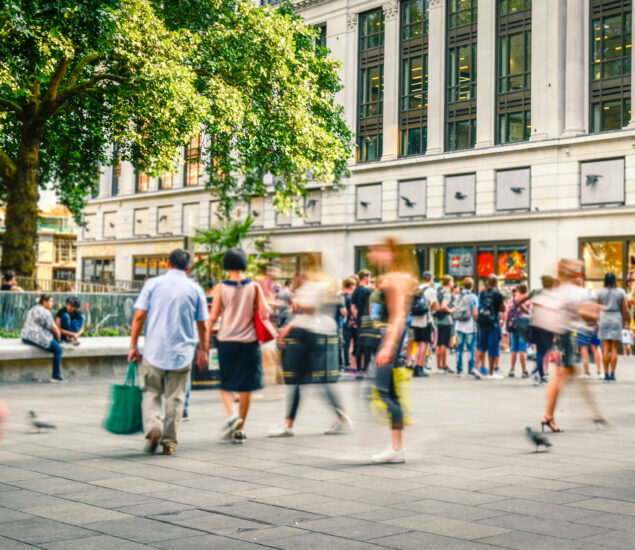Bollards have become an important feature of our cities. And when it comes to city planning, many landscape architects and urban planners strategically use bollards around cities as hostile vehicle mitigation (HVM) – a measure designed to stop terrorists from using vehicles as weapons (VAW).
What Problems do Landscape Architects Face When Implementing Traditional Bollards?
Bollards have become an important feature of our cities. And when it comes to city planning, many landscape architects and urban planners strategically use bollards around cities as hostile vehicle mitigation (HVM) – a measure designed to stop terrorists from using vehicles as weapons (VAW).
Put simply, bollards are posts used to limit access to certain areas and to improve safety by stopping hostile vehicles. Typically, they are made of concrete or metal and available in varying sizes. As vehicles become larger, heavier, and higher powered, the installation and design of bollards has adapted in response. Nowadays varieties range from flexible bollards that can easily be hit without damage, to security bollards designed to protect buildings and pedestrian zones by stopping the vehicles that hit them. With the United Kingdom already witnessing multiple vehicle attacks in 2022, including two UK restaurants suffering significant damage after drivers deliberately crashed into them, security officials are ready to take action. Yet, it can often be challenging to know whether bollards are the appropriate measure to install, as they offer a unique set of advantages and, most importantly, disadvantages. When it comes to creating an effective security plan, it is therefore important to understand the most common problems you may encounter through the design and installation phases. This article offers a run-through of the top 5 problems with traditional bollards – helping you decide whether bollards are the right fit for your environment.
1. The Aesthetic Appeal of Bollards
The aesthetic appeal of security measures is incredibly important when it comes to both footfall in cities and the comfort of citizens. Living amongst obtrusive security measures may act as a constant reminder of the looming threat of terror. Many cities across the United Kingdom have come under scrutiny for their quick reaction to terror threats, scattering noticeable bollards around the city. Bollards tend to lack aesthetic appeal and can often make a city feel hostile as they cannot generally be disguised and are, therefore, obvious security measures. As a result, bollards that are, for example, placed around tourist sites can often draw attention away from historic landmarks. David Scharia, Director of Counter Terrorism for United Nations Security Council, even demanded that urban designers work to integrate such obvious security measures as a way to make public spaces more aesthetically pleasing. However, it is not impossible to add aesthetic value to a city with bollards. For example, London has seen some success by using customized bollards in the Renaissance London Hotel (a historic Grade I listed London building with a high-level threat profile). In collaboration with ATG Access, the hotel chose to implement bollards with a “bespoke burgundy sleeve design” that was able to successfully blend in with the building’s façade. The lack of aesthetic appeal might make bollards difficult to integrate, but this issue can be circumvented by investing in bollards customized to fit a certain environment.
2. Automatic Bollards can be Pricey
Automatic bollards are incredibly practical when it comes to limiting access to events and markets – they are typically used when cities host Christmas markets, for example. Yet, when it comes to the upkeep of automatic bollards, costs can be high and maintenance can be tricky. This is because automatic bollards are susceptible to environmental conditions such as oxidation and rusting in high-saline environments and de-icing chemicals. This is especially problematic as such conditions can prevent the bollards from working, I.e., they cannot retract. So, although retractable bollards are usually coated to prevent corrosion and wear, routine maintenance needs to be carried out every 3 months.
3. Return on investment (ROI) of Bollards
It is no secret that installing security measures can be costly. Yet, when looking at the return on investment (ROI), we can gauge the profitability associated with installing certain HVM measures. In comparison to security measures that can also be used as street furniture, the return on investment for bollards is not very high. This is because HVM benches, for example, combine two costs – the cost of street furniture and the cost of a security measure. By combining these two costs, landscape architects and urban designers will not have to allocate extra time and money towards designing and implementing street furniture around the city. Bollards, therefore, do not offer a high return on investment as they are strictly used for security.
4. Bollards are Susceptible to Damage
Although a bollard is a durable HVM measure, damage will still occur and can lead to problems down the line. It is, therefore, paramount to effective bollard management to pinpoint where the damage to bollards is coming from and how it can create problems. There are two overlying problems: (I) environmental conditions and (II) human interaction. As previously mentioned, bollards are designed to withstand a variety of environmental conditions such as high-winds and rain. However, these conditions will inevitably wear down the bollard over time. For example, coastal environments may subject the bollard to saltwater spray and busy roads can subject it to particulates and other pollutants. Other damages may be dents, breaks, rust, and cracks. Recognising problems connected to environmental damage will, therefore, incredibly important to the bollard’s lifespan. Second, the purpose of bollards is often to act as a visual aid or deterrent to drivers. As such, scratches, bumps, and scrapes are very much part of the life cycle of a bollard and will increase maintenance costs.
5. Bollards Make Accessing Areas Difficult
Bollards block or restrict certain areas by preventing cars, as well as people, from accessing certain parts of an urban environment. However, this has been shown to negatively affect business owners across cities. For example, business owners in York’s shambles have expressed great frustration over the newly installed HVM bollards, which they say significantly impacted their trade. On November 8th and 9th, the bollards were installed to protect visitors and traders during the busy festive season and St. Nicholas’ Fair. Despite the intent to protect citizens from a possible hostile vehicle attack, the Shambles traders believe the measures to be “inconsiderate” and “unfair” as it both may slow pedestrian traffic and leaves delivery and emergency vehicles unable to get through. “We are not against the barriers, what we are against is the fact that we have been overlooked,” vice chair of York Retail Forum Phil Pinder told.
With the Protect Duty looming, and a large variety of HVM measures currently on the market, it can be difficult to know what measure is appropriate. Whether you install a bollard or a green-screen planter, the success of the HVM measure can vary greatly depending on your environment. It is, therefore, a helpful first step to consider the most common problems associated with bollards. Ideally, the bollard you choose will be in place for years to come, so it is important to consider what could go wrong before making concrete decisions.
Are you interested in knowing more about bollard installation or design-led solutions for your city?
Contact us at: +45 44 97 10 99
Or write to us at: contact@unafor.com






